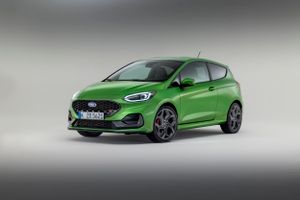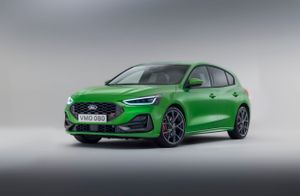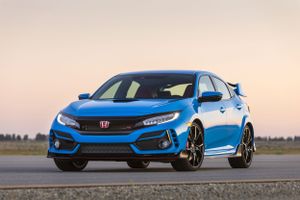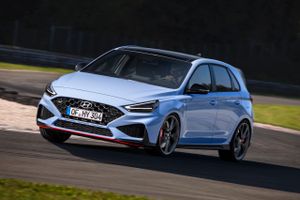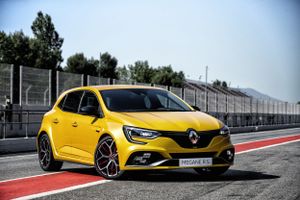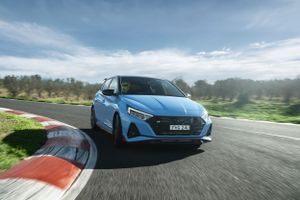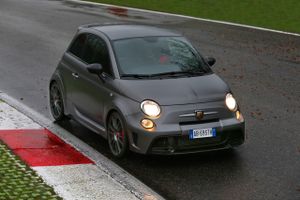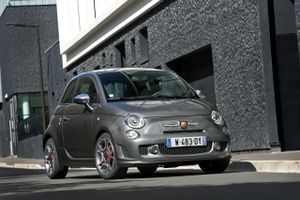Comparison of Abarth 595 and Hyundai i30 N
Comparison of Abarth 595 and Hyundai i30 N
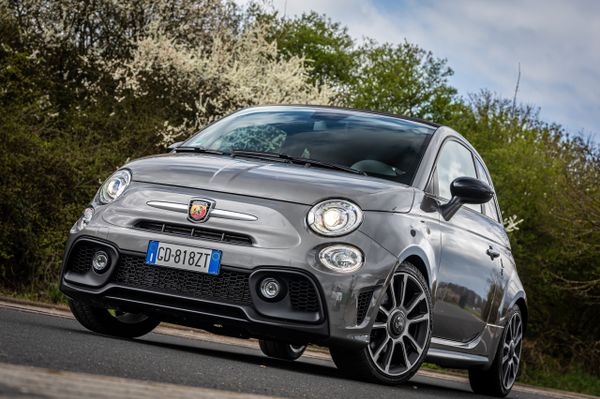
Abarth 595
Price not determined
No one is selling yet
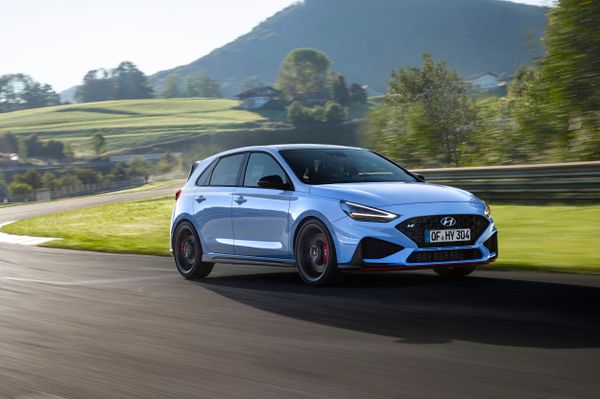
Hyundai i30 N
Price not determined
No one is selling yet
Characteristics
Abarth 595 and Hyundai i30 N
Transmission
Robotic
Robotic
Number of gears
5
8
Type of drive
FWD
FWD
Top speed
218 km/h
250 km/h
Acceleration to 100
7.4 sec
5.4 sec
Fuel tank capacity
35 l
50 l
Curb weight
1 075 kg
1 455 kg
Max weight
1 970 kg
Length
3 660 mm
4 355 mm
Width
1 627 mm
1 795 mm
Height
1 485 mm
1 447 mm
Wheelbase
2 300 mm
2 650 mm
Front track width
1 556 mm
Rear track width
1 564 mm
Trunk volume min
436 l
Trunk volume max
1 337 l
Wheel size
205/40 R17
235/35 R19
Fuel consumption city
7.9 l
Fuel consumption highway
4.9 l
Average consumption
6 l
8.4 l
ECO class
Euro 6
Euro 6
CO2 emissions
190 g/km
Engine type
Gasoline
Gasoline
Engine location
Front, transverse
Front, transverse
Engine power system
Distributed injection (multi-point)
Direct injection (direct)
Engine capacity
1368 cm³
1998 cm³
Type of boost
Turbo
Turbo
Cylinder arrangement
Inline
Inline
Number of cylinders
4
4
Valves per cylinder
4
4
Compression ratio
9.8
9.5
Bore and stroke
72 x 84 mm
86 × 86 mm
Maximum power
165 (121 ) 5500
280 (205 ) 6000
Maximum torque N⋅m
235 3000
400 2100-4700
Front suspension
Independent, spring
Independent, spring
Rear suspension
Semi-independent, springorts hélicoïdaux, sem
Independent, spring
Front brakes
Ventilated disc
Ventilated disc
Rear brakes
Disс ventilated
Disс ventilated
Trim version
Abarth 595 and Hyundai i30 N
Driver's airbag
Passenger airbag
Side front airbags
Window airbags (curtains)
Driver's knee airbag
Tire pressure sensors
Locking the rear door locks
Keyless central locking
Immobilizer
Rear-view camera
Isofix for the back row
Anti-lock braking system (ABS)
Electronic stability program (ESP)
Hill start assist (HAS)
Emergency brake assist (BAS, EBD, EBA)
Automatic slip regulation (ASR)
Collision avoidance system
Lane departure warning system
Drive mode selection system
Traffic sign assist
Pedestrian detection system
Cyclist detection system
Blind spot monitoring system
Rear Cross-Traffic Collision Warning and Collision-Avoidance Assist (RCCW, RCCA)
AUX
USB
Bluetooth
12V
Carplay
Android Auto
Wireless Charging for Smartphone
Hands-free system
Sound
Audio system
Audio system
Pedal pads
Leather steering wheel
Front center armrest
Power window
Seat adjustment
Driver's seat adjustment
Seat trim
Artificial leather seats
Combined seat trim
Steering wheel height adjustment
Power steering
Power steering
Active power steering
Rear parking sensors
Front parking sensors
Air conditioner
Single-zone climate control
Single-zone climate control
On-board computer
Digital instrument cluster
Power mirrors
Multifunction steering wheel
Paddle Shifters
Sports steering wheel
Two-tone body
Red brake calipers
Spoiler
Headlights
Xenon / Bi-Xenon
LED headlights
Rear LED lights
Rear LED lights
Daytime running lights
Fog lamp
Light sensor
Rain sensor
Diameter
R17
R19
Material
Alloy
Alloy
Photos
Abarth 595
Hyundai i30 N
Comparison of Abarth 595 with other cars
Comparison of Hyundai i30 N with other cars
Compare similar cars Abarth 595 and Hyundai i30 N
Abarth 595 and Hyundai i30 N are two popular cars, each with its own unique advantages and features. The choice between Abarth 595 and Hyundai i30 N depends on the driver's needs and preferences.Abarth 595 and Hyundai i30 N are two popular cars, each with its own unique advantages and features. The choice between Abarth 595 and Hyundai i30 N depends on the driver's needs and preferences.
